Meet Emmett and Cohen from Grass Valley, CA.
Emmett and Cohen live with type 1 diabetes.
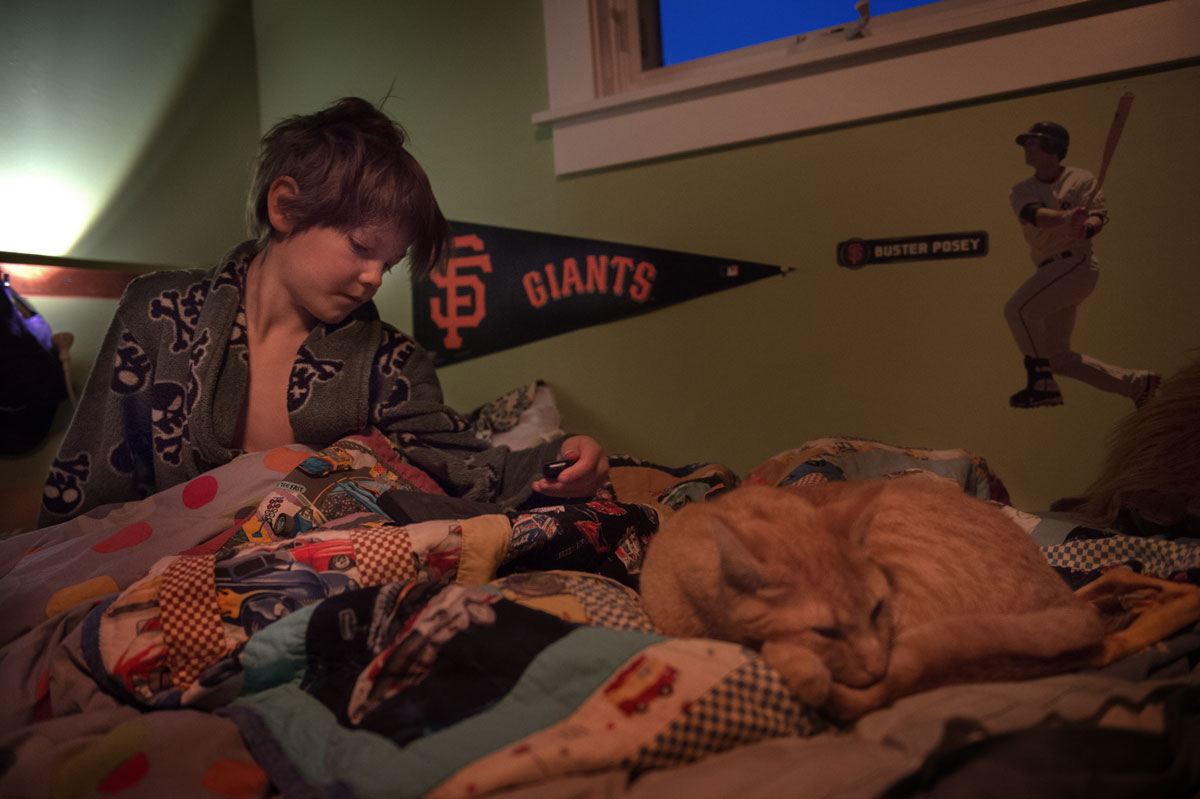
At 6:45 a.m., 8-year-old Emmett Jones wakes up and immediately checks his blood sugar (glucose) levels. His levels are high, which means he’ll need additional insulin. (Photo: Deanne Fitzmaurice)
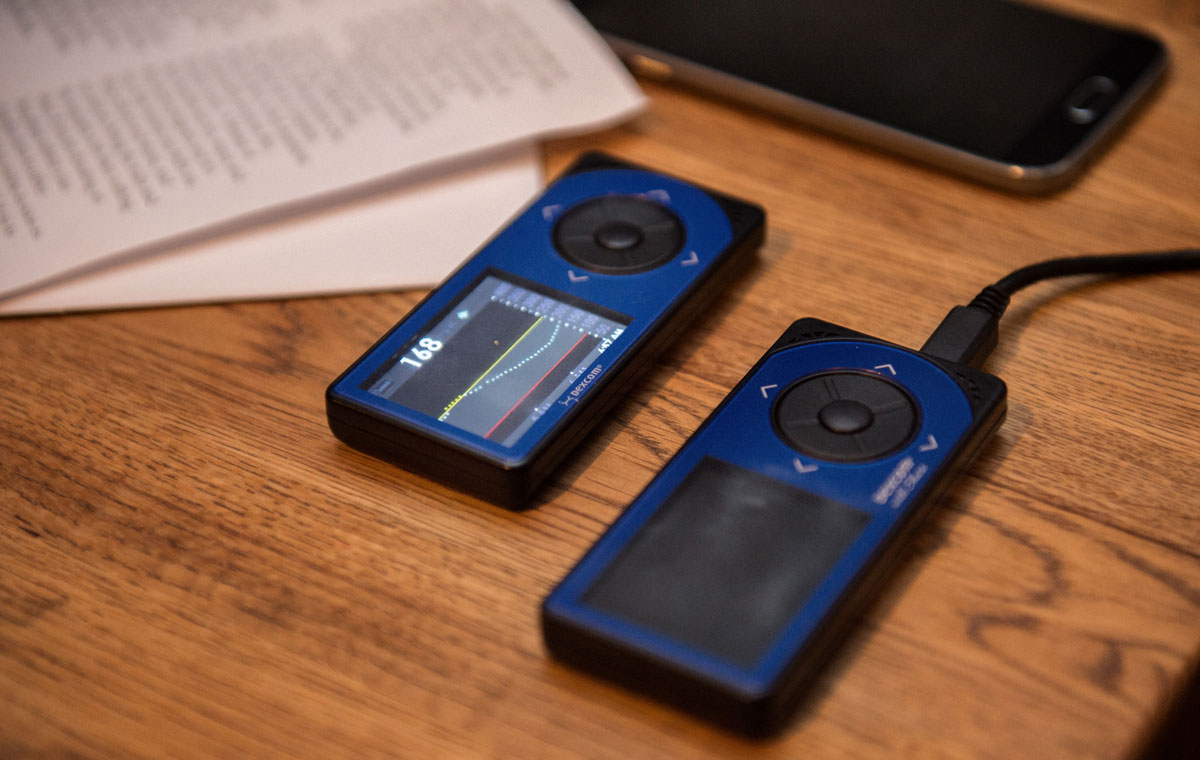
Emmett’s and Cohen’s continuous glucose monitors (CGM), which they keep in their pockets during all of their waking hours. At night, their mom, Samantha, sleeps with the receivers to continuously monitor their blood sugar levels. On most nights, she gets up three to four times to give them insulin or juice. (Photo: Deanne Fitzmaurice)
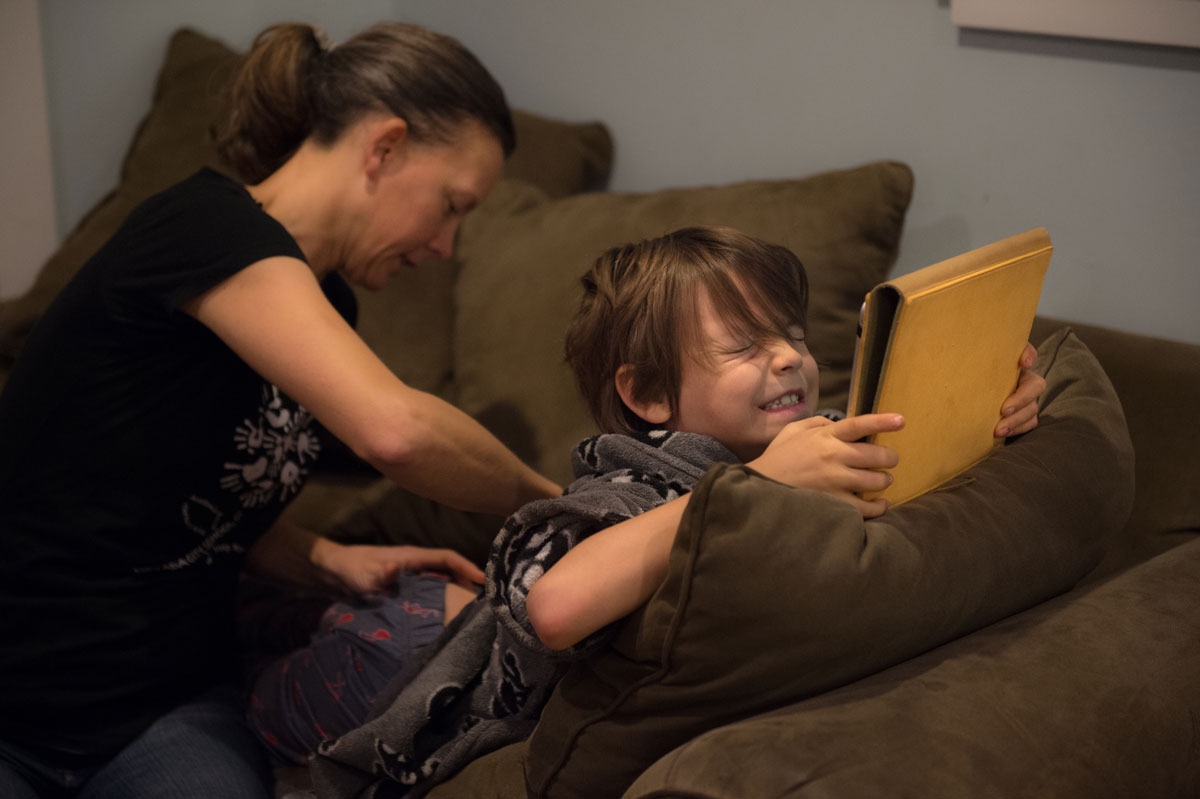
Samantha changes Emmett’s insulin pump insertion – a needle inside a tiny catheter, inserted into fatty tissue. The needle is then removed and the catheter can deliver insulin throughout the day. The boys’ pumps have to be changed every three days. Their continuous glucose monitor sensor, also inserted under the skin with a needle, needs to be changed every week. (Photo: Deanne Fitzmaurice)

Emmett measures a precise amount of cereal for his breakfast to help control his glucose level. (Photo: Deanne Fitzmaurice)
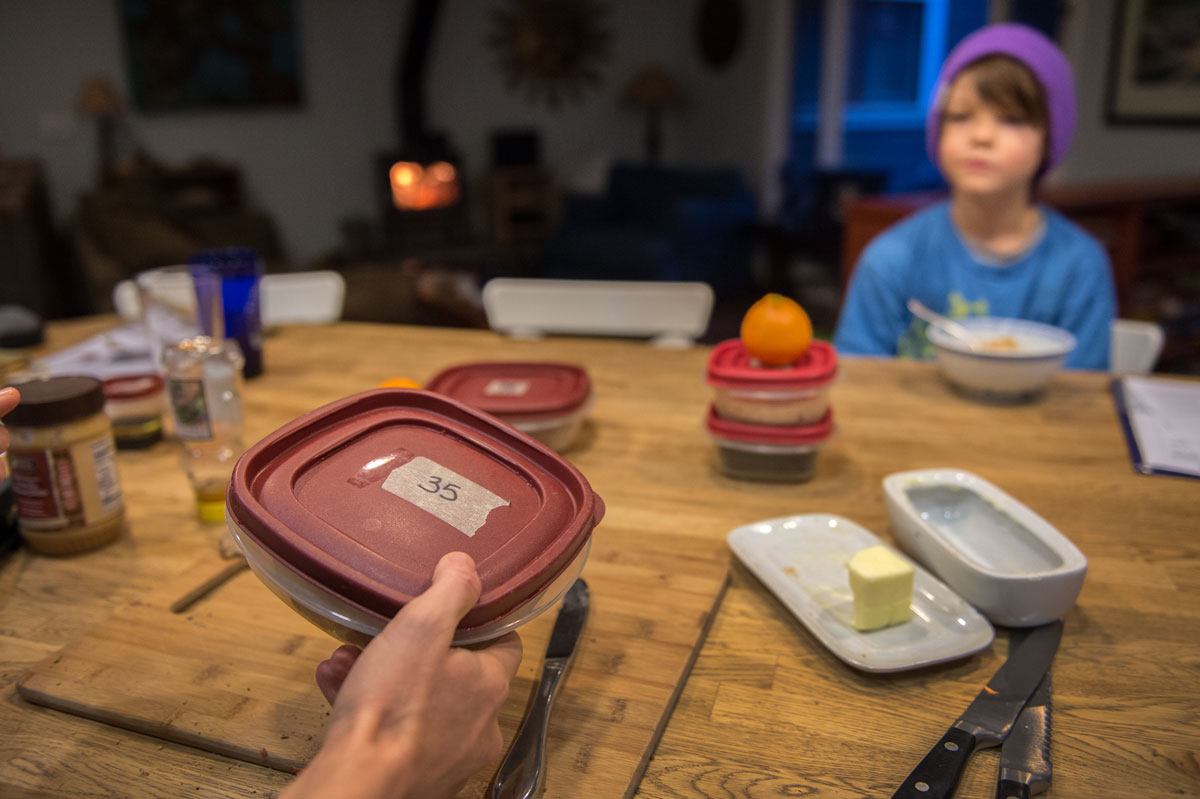
Samantha marks the carbohydrate count on Emmett’s and Cohen’s lunches. Throughout the day, the boys get insulin from their pumps, and eat snacks so their sugar levels don’t fall dangerously low. On some days, they snack all day to keep their sugar levels near normal. On other days, they need additional insulin injected by a syringe because their sugar levels aren’t coming down. (Photo: Deanne Fitzmaurice)
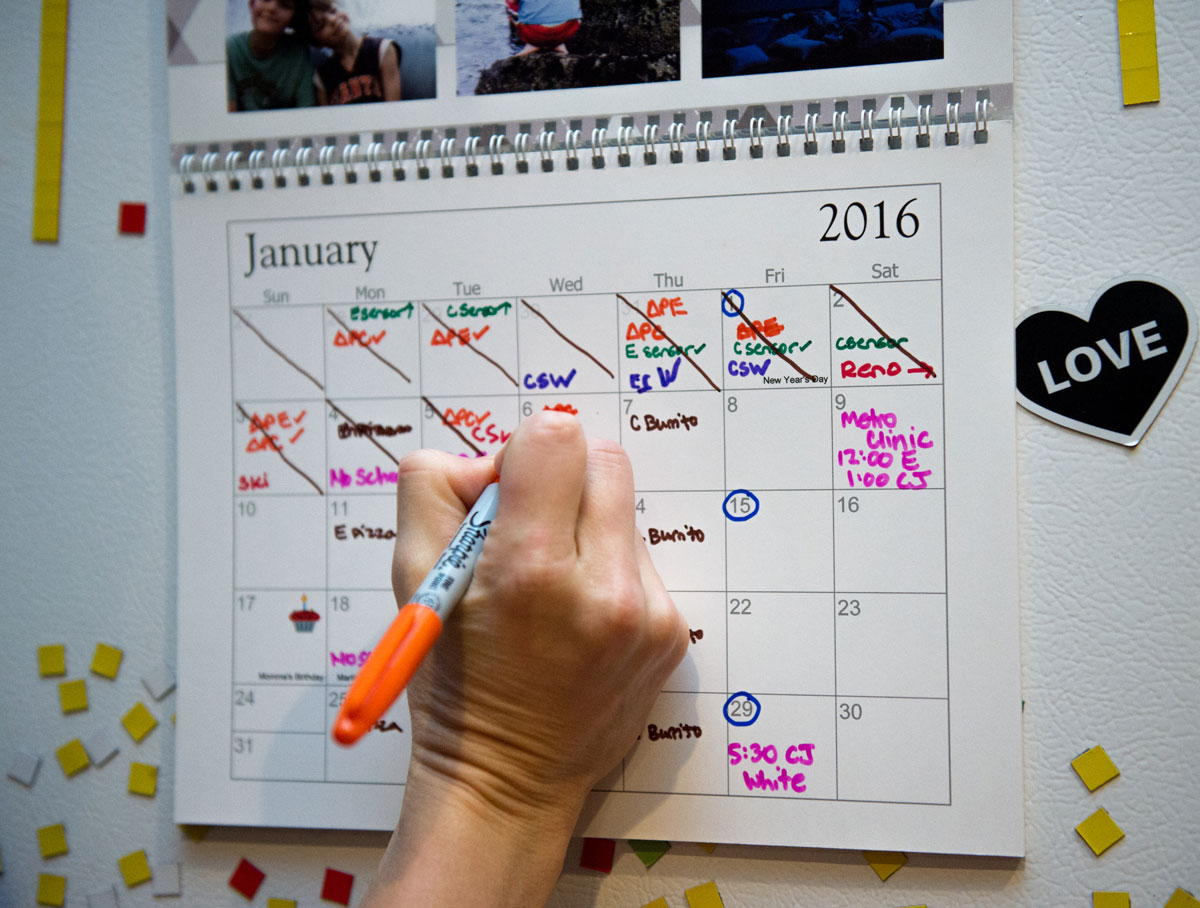
The Jones’ family calendar helps keep track of regular insulin pump insertion and continuous glucose monitor changes to prevent infections. The calendar also includes menu items for school lunches. (Photo: Deanne Fitzmaurice)

Cohen and Emmett at their home in Grass Valley, CA. The boys have to check their blood sugar levels every time they exert themselves, too. (Photo: Deanne Fitzmaurice)
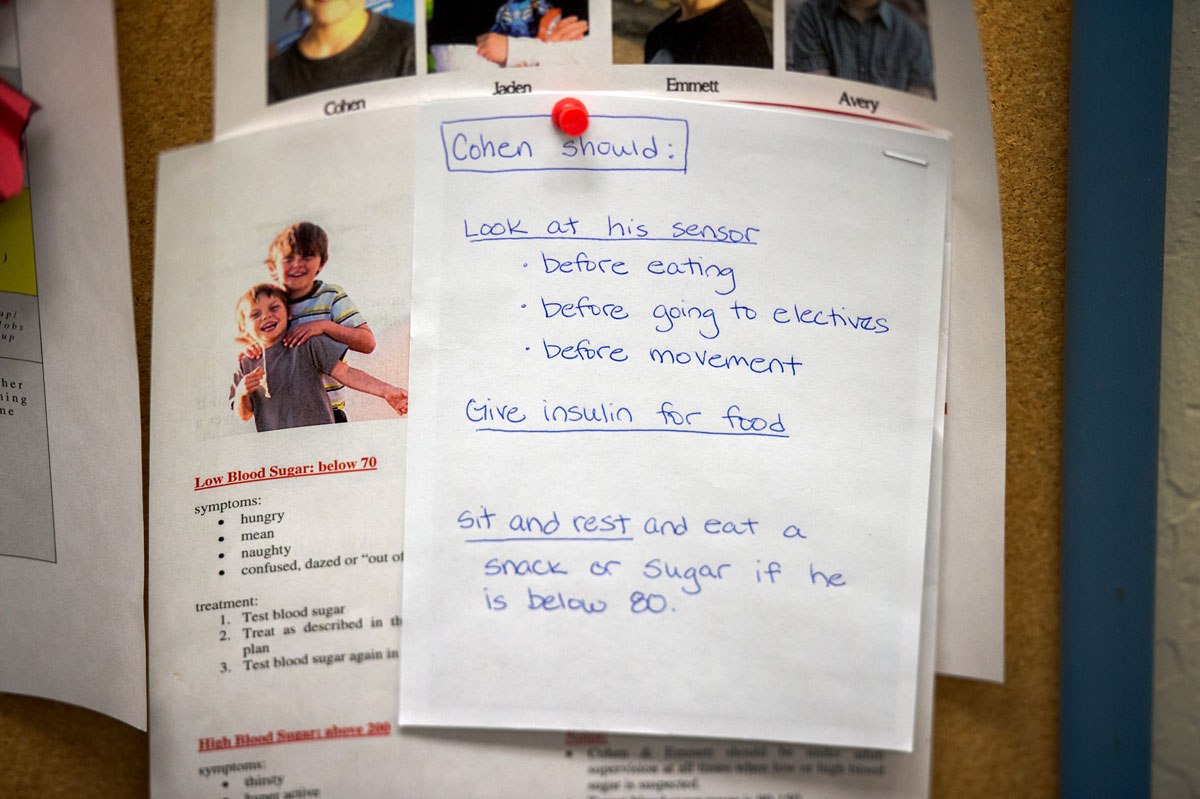
Older brother Cohen is now capable of monitoring his own glucose levels and counting his own carbohydrates, but he sometimes forgets. (Photo: Deanne Fitzmaurice)

Both boys have emergency kits in their classrooms with candy and frosting in case they need to raise their sugar levels. (Photo: Deanne Fitzmaurice)
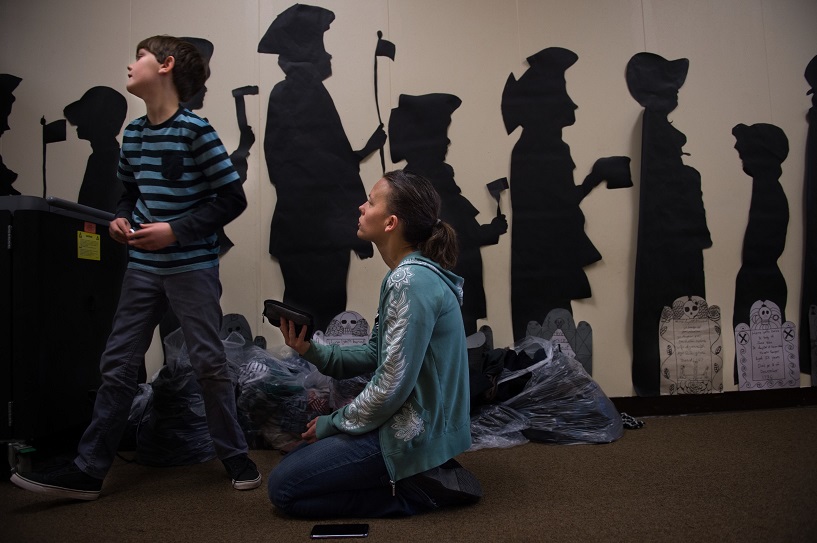
Samantha is an art teacher at her sons’ school. Several times a day, she visits her sons in their classrooms to check on their blood sugar levels. “What does your Dexcom say?” she asks, referring to Cohen’s glucose monitor. (Photo: Deanne Fitzmaurice)
Emmett and Cohen’s care map
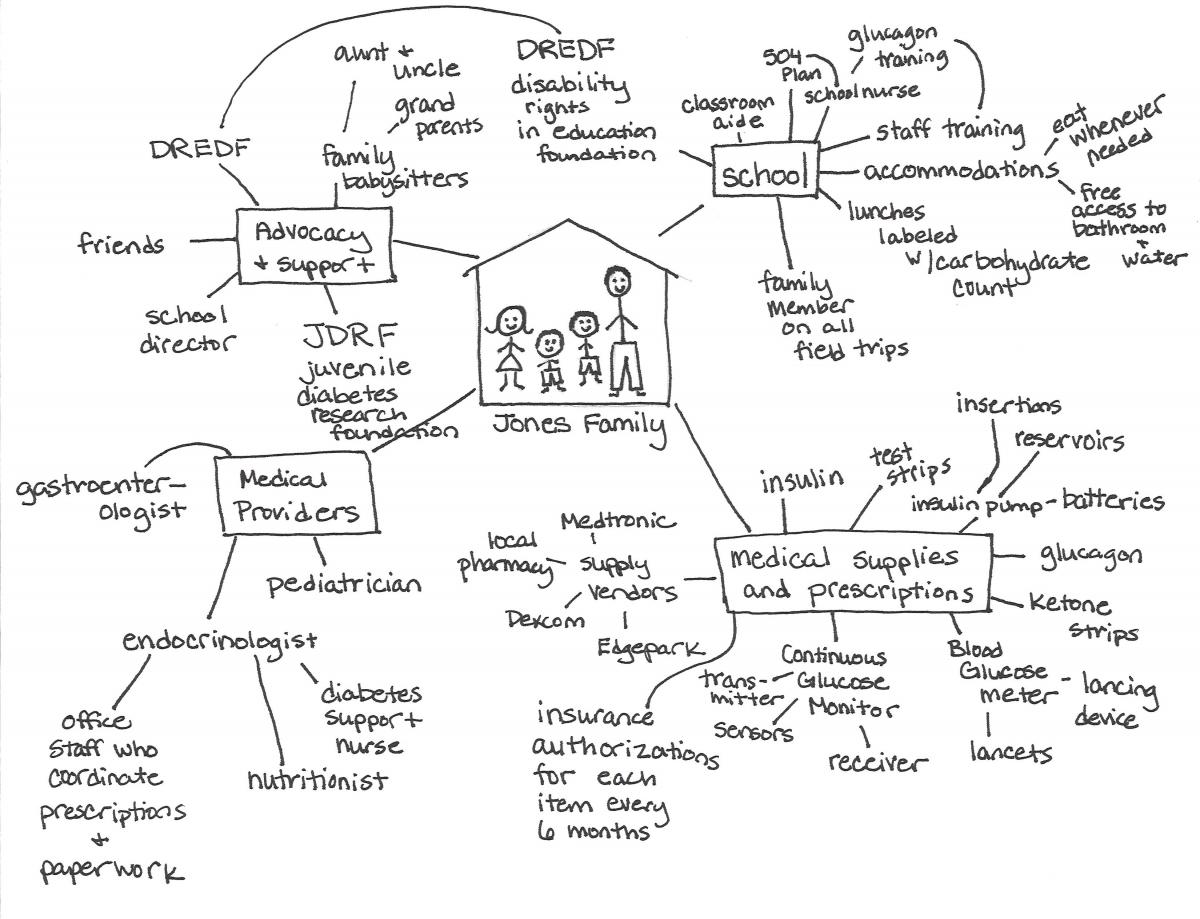
Emmett and Cohen’s “care map,” which illustrates the complicated web of medical care and coverage, as well as educational and support services needed for children with medical complexity and their families.

